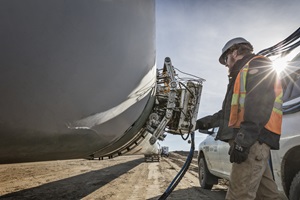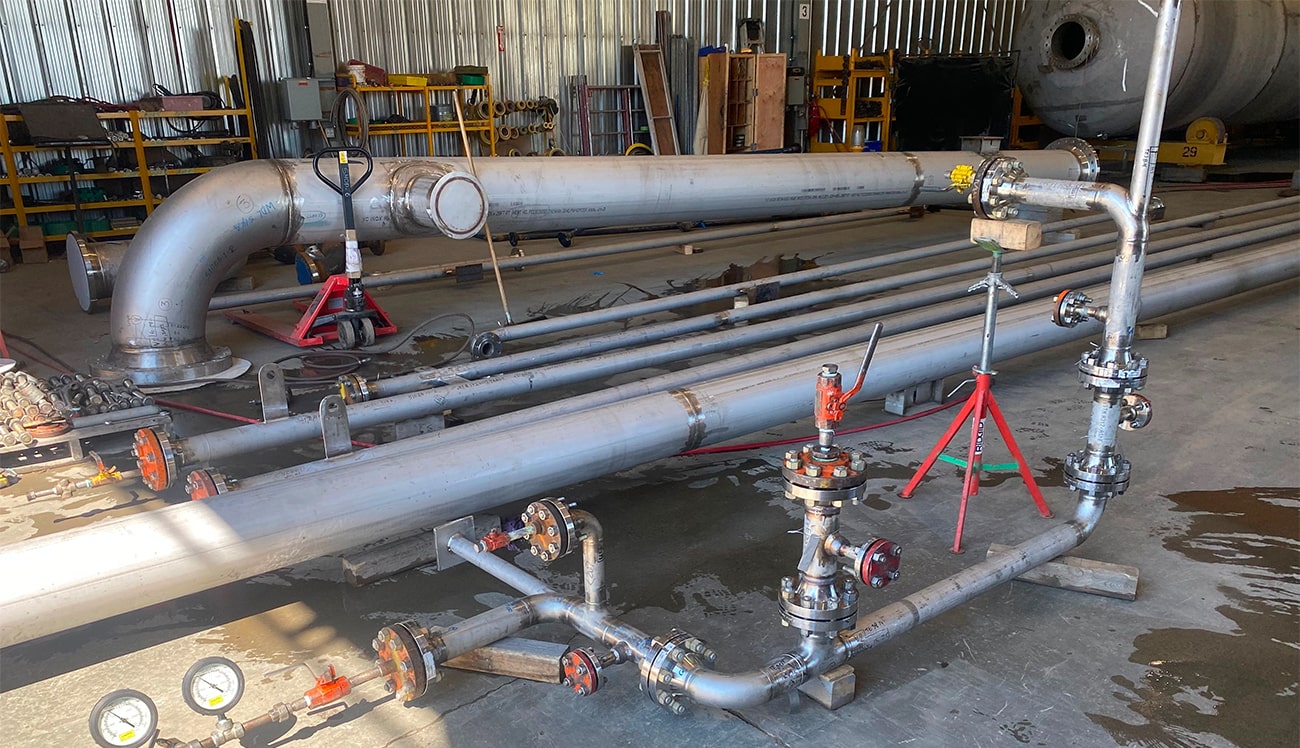Comprehensive Overview to Pipeline Welding Inspection: Ensuring Stability and Security in Pipeline Building And Construction and Upkeep
The stability and safety and security of pipes are paramount in today's facilities landscape, emphasizing the vital duty of welding evaluation in pipe building and construction and maintenance. Pipeline Welding Inspection. The complexities entailed in welding assessment raise essential questions concerning sector requirements and the advancing technologies that may redefine these methods.

Value of Welding Inspection
Welding inspection plays a vital function in ensuring the honesty and safety of pipeline systems. It acts as a fundamental process that verifies the high quality and dependability of welded joints, which are usually the most susceptible factors in pipe construction. Via methodical evaluation, inspectors can recognize possible issues such as splits, porosity, and insufficient blend, which might jeopardize the structural honesty of the pipeline.
The significance of welding evaluation extends past mere compliance with industry standards; it additionally safeguards public wellness and the environment. If failings occur, pipes bring unsafe materials position significant threats. Efficient evaluation protocols aid protect against ruptures and leakages, reducing ecological damage and protecting areas. Moreover, extensive evaluations can boost the durability of pipeline systems, minimizing the need for pricey repair services and downtime.
In addition to ensuring safety and conformity, welding examination promotes a society of top quality guarantee within companies. By focusing on inspection throughout the welding process, firms can build an online reputation for integrity and excellence, inevitably leading to enhanced customer confidence and organization opportunities (Pipeline Welding Inspection). Thus, the relevance of welding inspection can not be overstated in the context of pipe building and construction and upkeep
Key Welding Processes
Different welding procedures are used in pipe construction, each with its very own benefits and applications. Amongst one of the most extensively used techniques are Protected Steel Arc Welding (SMAW), Gas Tungsten Arc Welding (GTAW), and Gas Steel Arc Welding (GMAW) SMAW is preferred for its versatility and capability to execute well in numerous ecological problems, making it ideal for field applications.
GTAW, usually referred to as Tungsten Inert Gas (TIG) welding, is recognized for its capability to create high-grade welds with exceptional control over warm input, making it suitable for thin-walled pipes and stainless steel materials. GMAW, or Metal Inert Gas (MIG) welding, offers high deposition prices and is reliable for large tasks, often utilized in the fabrication of pipelines in controlled settings.
In Addition, Submerged Arc Welding (SAW) is utilized for its deep penetration and high performance, especially in the building of large-diameter pipes. Each of these procedures adds to the general integrity and safety of pipeline buildings, enabling welders to pick the most ideal approach based on material kind, project requirements, and ecological conditions. Understanding these crucial welding processes is vital for effective pipe welding assessment.
Common Issues and Their Influence

Porosity, characterized by tiny gas pockets entraped within the weld, damages the product and can cause leaks. Cracks, which might take place as a result of thermal stress and anxieties or inappropriate air conditioning, can propagate and result in structural failing under pressure. Damaging, where the base steel is deteriorated along the weld bead, lowers the efficient cross-section of the pipe, raising the danger of fracture.
Incomplete blend takes place when the weld steel does not appropriately bond with the base metal, causing weak areas that may fall short under anxiety. Slag addition, the entrapment of non-metallic product within the weld, can likewise weaken the joint's integrity. Recognizing and attending to these problems early in the building and construction procedure is critical to making certain the long-lasting integrity and security of pipe systems, consequently protecting both the environment and the facilities.
Inspection Devices and techniques

Visual examination helpful site is the very first line of defense, permitting examiners to recognize surface area irregularities, misalignment, or various other visible issues. Ultrasonic screening employs high-frequency acoustic waves to find internal imperfections, supplying accurate depth dimensions and characterizing issues without harming the weld. Radiographic screening uses X-rays or gamma rays to generate pictures of the weld, enabling the recognition of internal spaces, splits, or additions.
Magnetic fragment screening is especially effective for finding surface and near-surface discontinuities in ferromagnetic materials. This method involves applying a magnetic area and fine iron bits to the weld, exposing defects through the buildup of fragments at flaw sites.
In addition to these methods, specialized devices such as automated ultrasonic testing tools and electronic radiography systems enhance assessment precision and efficiency, making sure an extensive assessment of pipeline welds during building and construction and maintenance.
Finest Practices for Compliance
Following ideal methods for conformity in pipe welding examination is essential for making certain the honesty and safety of the infrastructure. Organizations should develop a comprehensive quality administration system that lines up with market requirements such as ASME, API, and AWS. This consists of creating comprehensive welding procedures that specify the certifications, methods, and products required for welders.
Regular training and certification of inspection personnel are vital to preserve high proficiency degrees. Assessors need to recognize with numerous non-destructive testing (NDT) methods, including ultrasonic screening, radiographic testing, and visual inspection, to effectively recognize prospective problems.
Documentation plays a vital role in conformity; preserving exact documents of examinations, weld procedures, and personnel credentials visit this website assists to ensure traceability and accountability. Set up audits and evaluations of welding practices need to be carried out to identify areas for renovation and make sure adherence to established methods.

Verdict
Finally, the execution of extensive welding assessment procedures is vital for making sure the stability and security of pipeline building and construction and upkeep. By determining defects and utilizing sophisticated evaluation techniques, companies can significantly enhance the top quality of welded joints. Abiding by ideal techniques fosters compliance with industry criteria, inevitably guarding public health and wellness and stopping environmental threats. Constant enhancement in assessment processes will certainly contribute to the longevity and integrity of pipeline systems, emphasizing the critical duty of welding assessment in the industry.
The honesty and security of pipelines are vital in today's infrastructure landscape, emphasizing the important duty of welding inspection in pipeline building and construction and maintenance. Understanding these key welding processes is necessary for reliable pipe welding examination.
Adhering to best methods for conformity in pipe welding examination is important for making certain the integrity and safety and security of the facilities.In conclusion, the execution of rigorous welding examination methods is vital for making certain the honesty and security of pipeline construction and maintenance. Constant improvement in examination procedures will add to the durability and integrity of pipeline systems, emphasizing the important role of welding assessment in the industry.